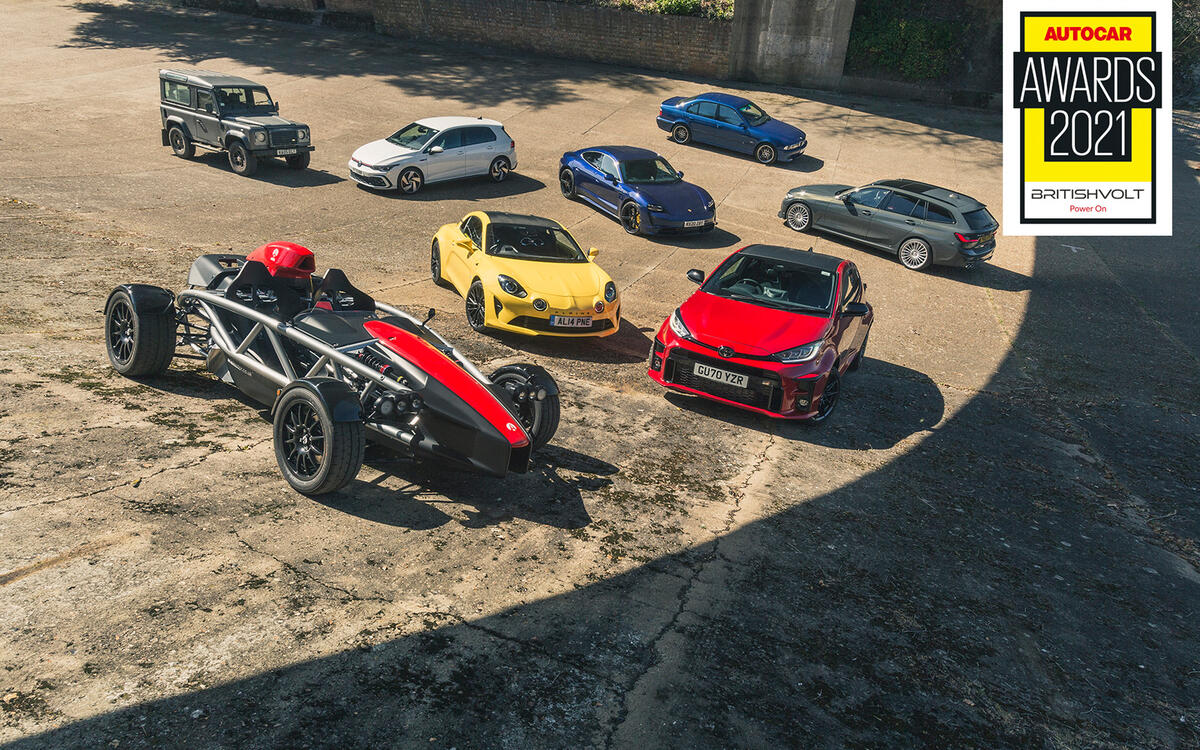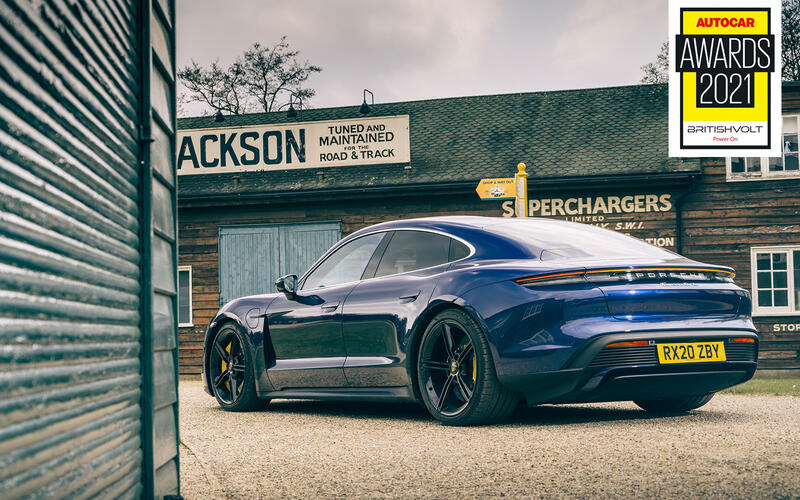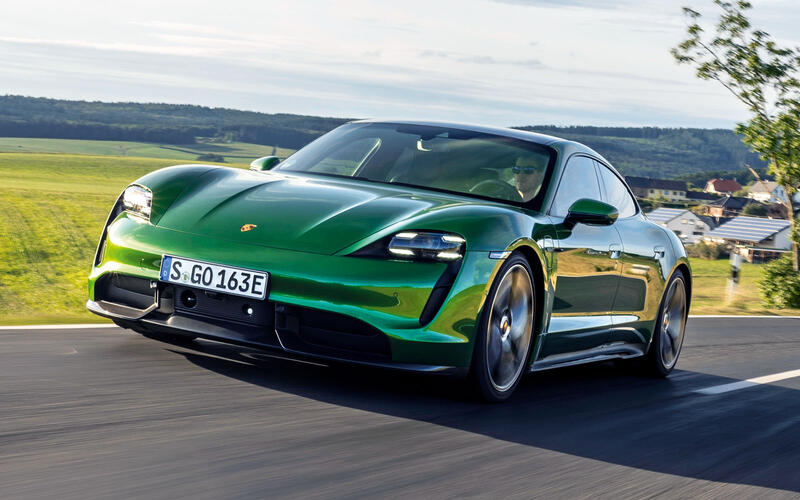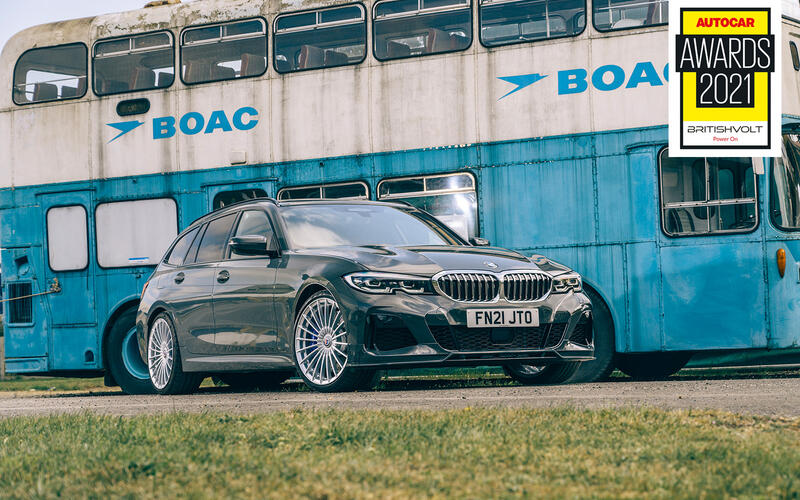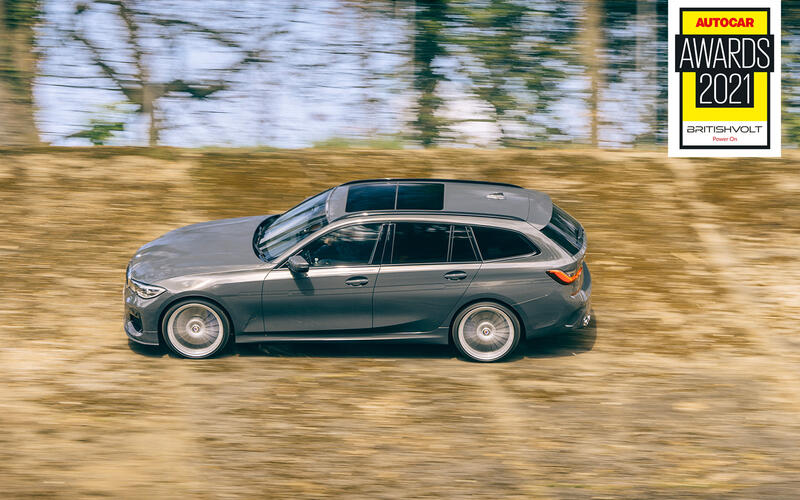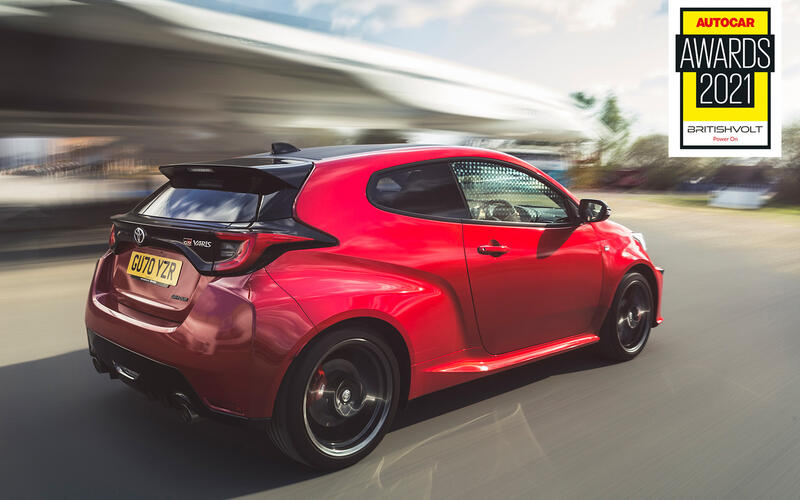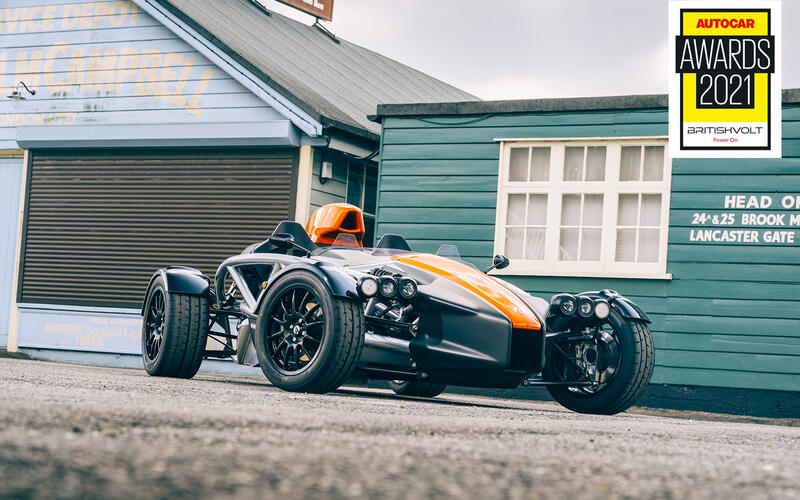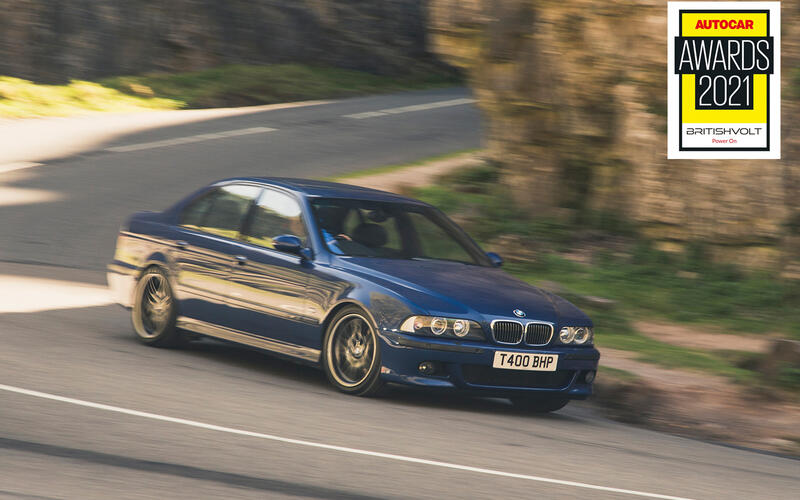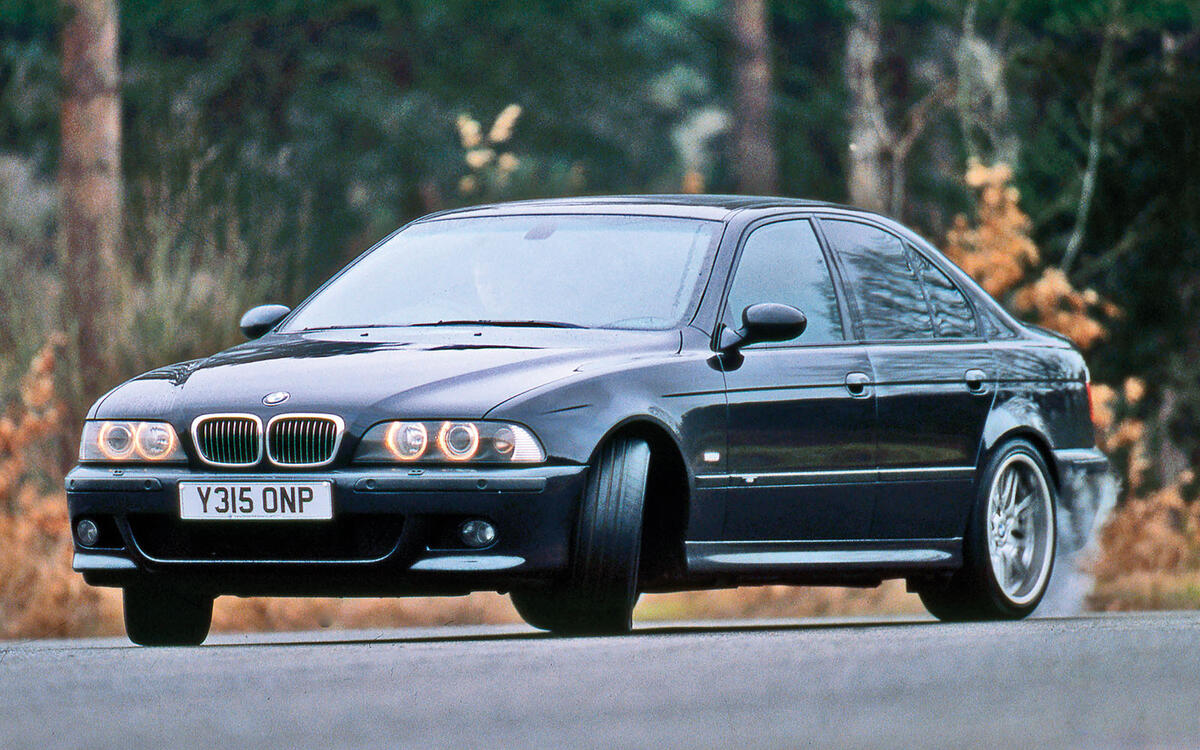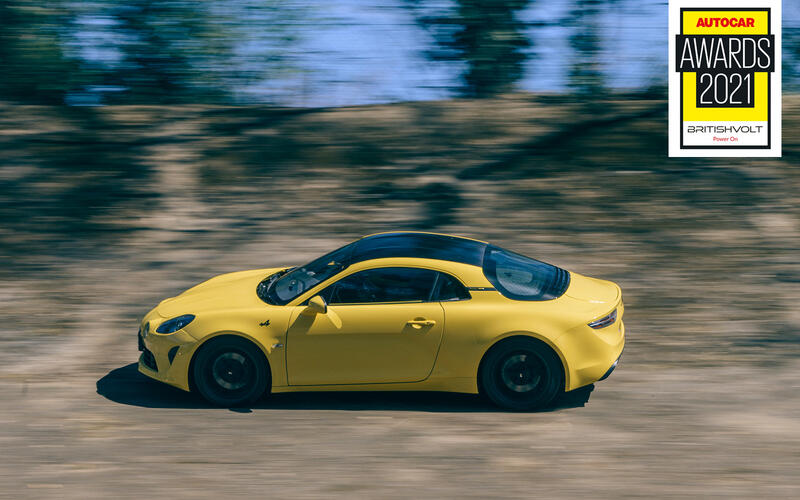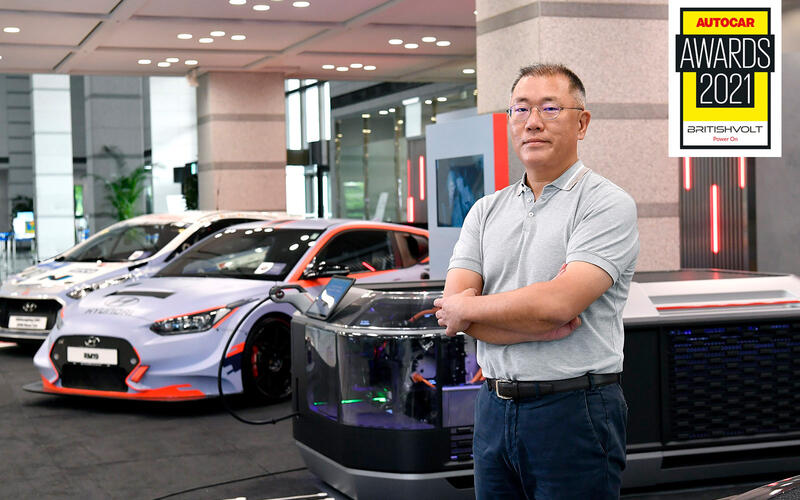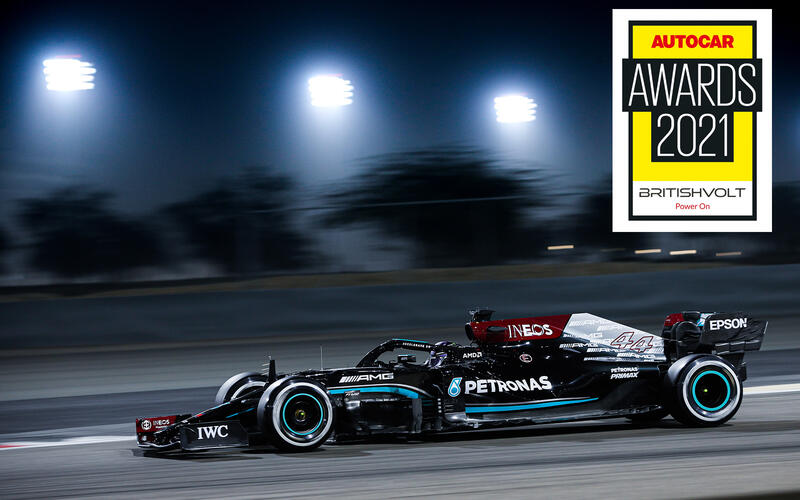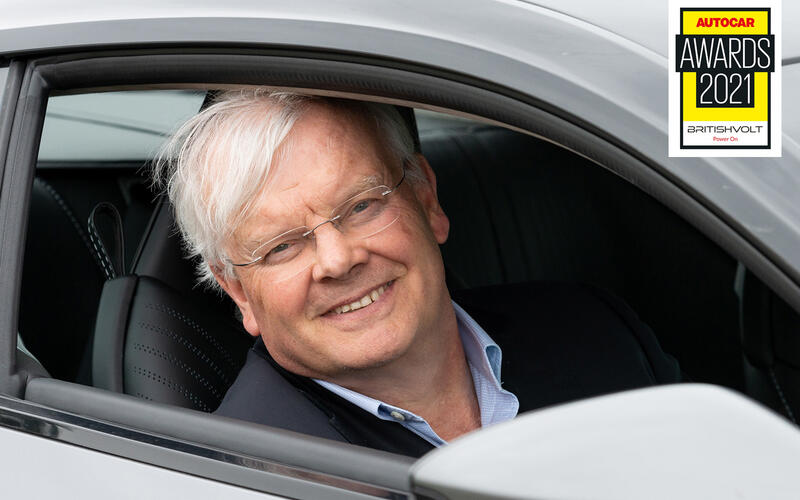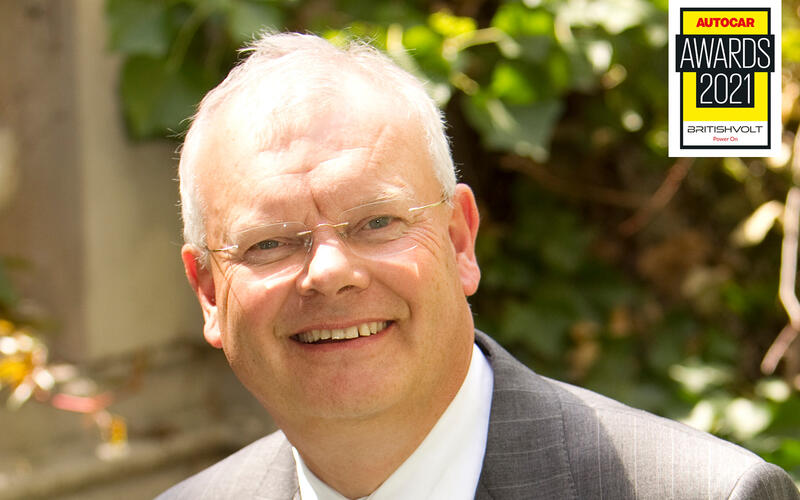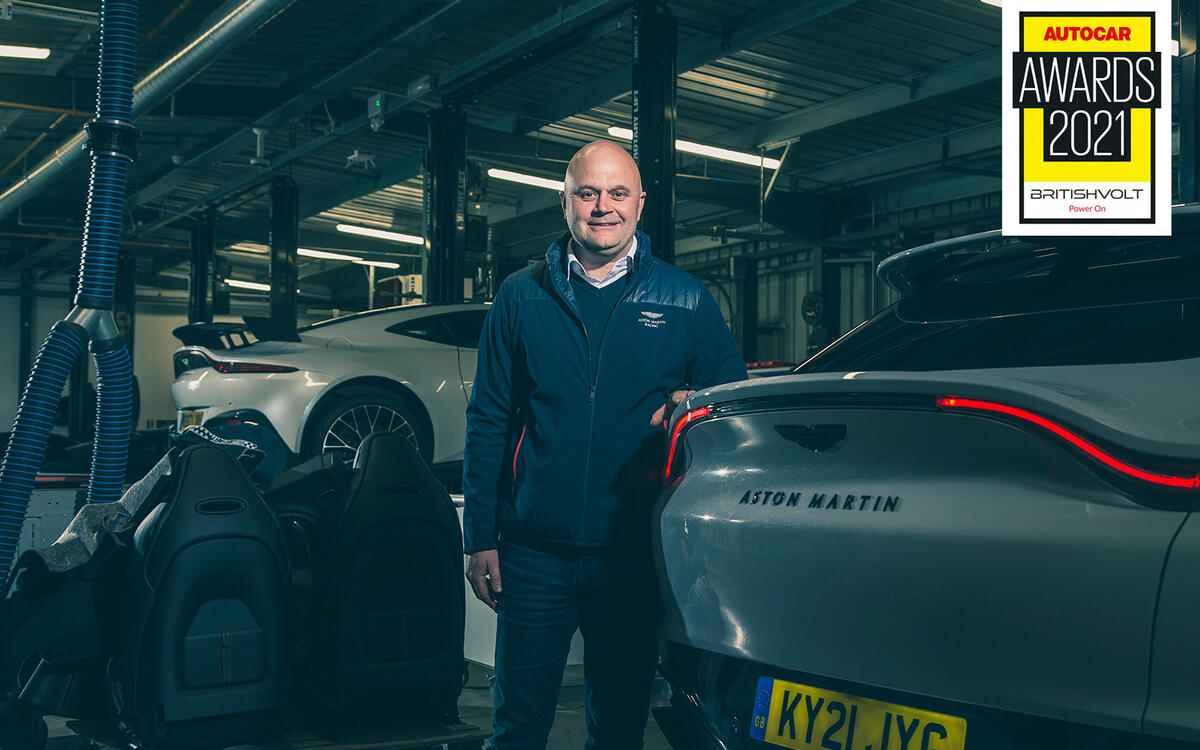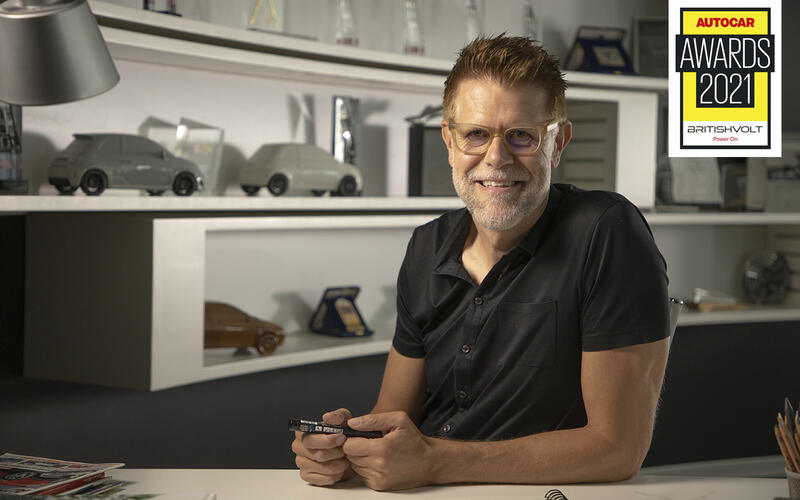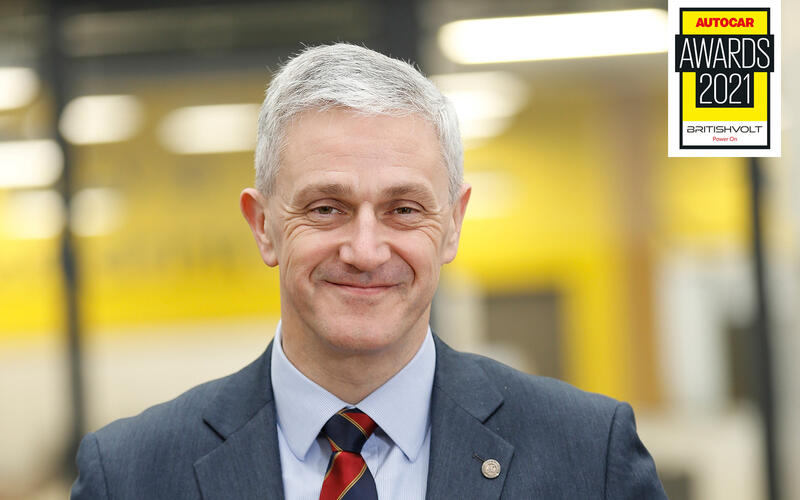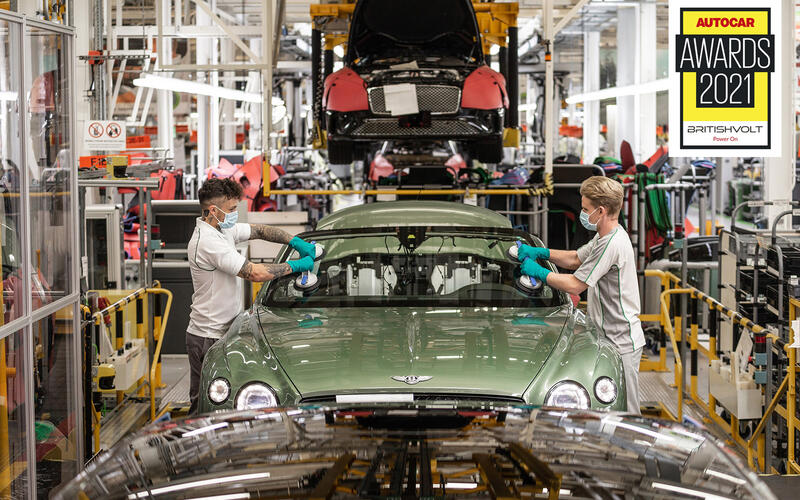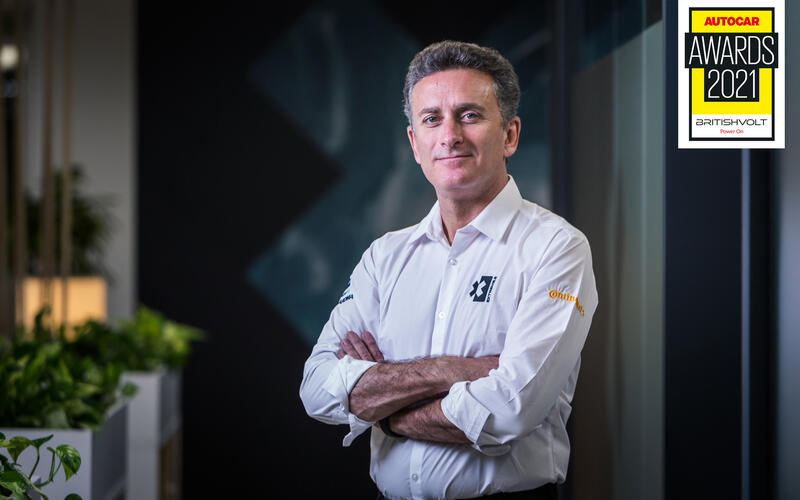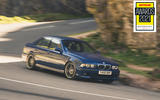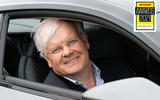 Slide of
Slide of
Welcome to the 2021 Autocar Awards in association with Britishvolt, our annual celebration of the finest cars and the people who created them.
Through all the uncertainties over the past year, one constant has been the car industry’s ability to keep on producing innovative and brilliant new machines. And although the pandemic prevented us from holding a ceremony for the second year running, we still wanted to highlight the industry’s superb achievements.
It also didn’t stop us gathering many of the star cars at Brooklands and producing in-depth features on all of our winners. So join us in celebrating their amazing successes over the next slides. We start with the very few new cars that scored a full Five Stars in our rigorous road test in the past year:
 Slide of
Slide of
5 STAR CAR: Porsche Taycan Turbo S
The Autocar road test has given some emphatic recognition and praise to plenty of electric cars over the past decade. But no battery-electric production machine – not the Tesla Model S in 2013, the BMW i3 in 2014, the Jaguar I-Pace in 2018 or the Kia e-Niro in 2019 – was awarded a full-house five-star rating before the brilliant Porsche Taycan was, on 29 July 2020.
More than any other car of its ilk, the Taycan vividly demonstrates that the electric car can be so much more than the dull, characterless means of transport that so many expect. An astonishingly fast, really tactile, effortlessly poised and genuinely absorbing driver’s car as objectively accomplished as any bigger Porsche that has ever been built, it goes leagues beyond the staggering catapult acceleration and rapier response of its one-trick high-end electric rivals.
 Slide of
Slide of
5 STAR CAR: Porsche Taycan Turbo S
It handles, communicates and involves superbly well on the road and holds its own on track, too. It’s a proper Porsche, much as some won’t easily admit it. What’s more, if Porsche’s stunning accomplishment with this car had been achieved by simply squeezing the most state of-the-art electric powertrain, energy storage and active chassis technologies into a car with a six-figure price, the Taycan would have a credible sporting rival by now. But, not counting the intimately related Audi E-tron GT, it doesn’t – and we suspect it won’t for some time to come.
 Slide of
Slide of
5 STAR CAR: ALPINA B3 TOURING
We usually reserve five-star verdicts for cars that profoundly change their particular game. There is little revolutionary about this new Alpina B3, but in Touring guise, the car’s collection of attributes are so compelling and appreciable that they exceed the sum of their parts.
The B3 Touring earns five stars because there is arguably no other car on sale that so successfully slathers its appeal across the realms of comfort, performance, practicality, engagement and–relative to the cars against which it competes–value for money. It is one sensationally well-rounded product. Alpina’s success stems from its ability to recognise what customers want from their cars.
 Slide of
Slide of
5 STAR CAR: ALPINA B3 TOURING
BMW’s latest 3 Series represents the finest base for an Alpina conversion since at least the E46 generation, if not the E30, but an extraordinarily potent 456bhp straight-six engine and detail chassis engineering changes take the package to new heights of maturity and enjoyment.
This is most obviously demonstrated in the way the new car is sweeter than its excellent predecessor not only on B-roads but also on motorways. For those who like to drive their performance cars seven days a week and in all seasons, the B3Touring is an especially rare gem.
 Slide of
Slide of
5 STAR CAR: TOYOTA GR YARIS
Contrary to the explosive hype uncorked by its arrival, the GR Yaris was no shoo-in for a fivestar verdict. Nothing ever is. I can remember the debates we had about even the miraculous Alpine A110, which culminated in Matt Saunders and I returning one Friday afternoon to the Dunlop Handling and Stability Circuit at MIRA for a second time that week, just to be sure. The Toyota also has some notable foibles.
It’s not always the most fluid device, and the ergonomics are hampered by the perched driving position. Related to that, the rear-view mirror cuts off your line of sight on the way into corners: not great in a B-road specialist.
 Slide of
Slide of
5 STAR CAR: TOYOTA GR YARIS
And yet, both in concept and execution, the GR Yaris is a spellbinding machine, shot through with integrity and feel-good factor in equal measure. That’s rare in six figure thoroughbreds let alone £30,000 tearaways. It’s a complex car on paper but feels gloriously pure on the move, and it has not only performance to spare but also serious intrigue in the handling department: trustworthy, but with an edge to its dynamic character. You simply don’t get bored with the GR Yaris. Ever.
Which is why, at last year’s Britain’s Best Affordable Driver’s Car contest, it put to the sword not only the Volkswagen Golf GTI (we knew it would), but also the Ford Fiesta ST (slightly surprising, that) and the Honda Civic Type R (simply, wow). Bravo Toyota, you’ve created a legend. RICHARD LANE
 Slide of
Slide of
BRITAIN’S BEST DRIVER’S CAR: Ariel Atom 4
It’s rare that a car retains its Britain’s Best Driver’s Car title once, but the Atom 4 won’t arrive at this year’s BBDC contest as an outsider looking for a third win on the bounce. Last year’s contest, held in wet, cold conditions, shouldn’t have suited the Atom or any sodden, shivering person inside it, but it was just the purest driving experience we had on offer.
 Slide of
Slide of
BRITAIN’S BEST DRIVER’S CAR: Ariel Atom 4
It has agility and pace to spare, and it combines that raw ability with a lovely linearity and a way of telegraphing its every move that sucks the driver into the process and keeps them aware of exactly what’s going on. Those are the two keys to a truly great driver’s car: fantastic objective ability and a willingness to tell the driver what is happening. The Atom 4 achieves both of those.
 Slide of
Slide of
USED CAR HERO: BMW M5 (E39)
The late-1990s-to-early-2000s-era, third-generation E39 M5 in particular was hailed as one of the greatest and most versatile driver’s cars BMW has yet made when Autocar staffers were asked recently to nominate and justify the used car they had been daydreaming about for the past 12 months.
Despite its revered status, however, the E39 is, in some ways, a surprisingly humble performance car, which probably makes it all the more likeable. It’s a wonderful thing, though. So unlike its modern antecedents in its simplicity, versatility, mechanical authenticity and deep-rooted analogue charm.
 Slide of
Slide of
USED CAR HERO: BMW M5 (E39)
And yet not unlike them at all in its ability to pin those neat little door mirrors back and then hurl itself into the middle distance at a rate that makes it feel more than contemporary enough, thank you very much. For the avoidance of doubt, some 23 years after it was first introduced, you still don’t need a faster family saloon, I assure you.
It had an all-new atmospheric 4.9-litre V8 making 394bhp, at a time when the equivalent Audis and Mercedes struggled to top 350bhp. It had a rolling chassis that, by modern standards, actually looks quite ordinary. Nothing clever. And yet the appearance of this car was undoubtedly the moment when the gun was fired on a horsepower race that’s been rumbling on among the predominantly German ruling powers of the fast executive car firmament ever since. For better or worse, this was the car that started it all. Like the suspension specification, the car itself looks simple and understated but still darkly serious.
 Slide of
Slide of
READER’S CHAMPION: Alpine A110
We asked our readers to vote on their dream garage, and these were the three cars you came up with. We gave a theoretical budget of £100,000, split among the three categories of car that we think all three-car garages should include: a daily driver (for around £30,000), something just for fun (for around £50,000) and a £20,000 wildcard.
Let’s begin with the just for fun category. The only thing that weighs down the 1103kg A110 is the catalogue of platitudes that we’ve already thrown at it, including an ultrarare five-star road test verdict. There’s little we can meaningfully add here, except to say that the A110 lives up to every word of that praise on any road you could choose to thread it down. It’s wonderfully direct and agile yet also surprisingly soft and pliant, and its 1.8-litre four cylinder turbo engine is rewardingly responsive and very characterful.
 Slide of
Slide of
READER’S CHAMPION: VW Golf GTi
At some point you need to take the kids to school, pop to the supermarket or haul some rubbish to the tip. And that’s when you need a Volkswagen Golf. Of course you need a Golf. Many other daily drivers are available, but your votes reflect that when you want a well-honed all-rounder, Wolfsburg’s finest remains the car of choice.
And while the £33,525 starting price for a manual GTI is slightly above our budget, we reckon that some intense haggling will make it work and will be absolutely worth the hassle. The new Mk8 Golf GTI may stray a little more to the fringes of hardcore hot hatch territory, away from its traditional intoxicating balance. It’s upmarket enough to feel special and polished but mainstream enough to feel relaxing and comforting.
 Slide of
Slide of
READER’S CHAMPION: Land Rover Defender (original)
The final category was for a new or used wildcard entry. The versatility that makes the original Land Rover Defender great helped it secure victory. Certainly with £20,000 to spend, there’s a huge range of Defender options. For our garage, we opted for a ‘model’s own’ option, persuading our own Matt Prior to wheel out his well-used 90 Td5 XS from 2005.
He paid around £12,000 for it and reckons that it’s still worth about the same now. And that bargain price is also good news for our three-car garage in the event that we can’t secure a discount on our Golf GTI. Prior’s car perfectly symbolises why the Defender makes such a fine wildcard: he has filled it with loads, used it to tow horseboxes, taken it down rough green lanes, used it as a daily driver and whiled away the hours tinkering on it with his toolkit. Essentially, if you can imagine a motoring task that you couldn’t or wouldn’t do in an A110 or Golf, you could certainly do it in a Defender.
So that’s all the cars – what about the great people behind them?
 Slide of
Slide of
ISSIGONIS TROPHY: Euisun Chung, Hyundai
When Euisun Chung, 50-year-old chairman of the mighty Hyundai Motor Group, takes aim at an important target, you know he will hit it. Chung’s own consistently stellar performance as the visionary leader of his high-achieving company, the reason we’re proud to award him this year’s Autocar Issigonis Trophy for exceptional achievement and leadership in the motor industry.
“I want Hyundai Motor Group to be a first mover and a game-changer, both in ideas and actions within the mobility industry” Chung says. “We’re striving for sustainable growth and to fulfil what we see as our economic and social responsibilities as a global corporate citizen.”
 Slide of
Slide of
STURMEY AWARD: Thomas Ingenlath, Polestar
Having played a key role in its premium revolution, Volvo’s chief designer was given control of an all-new brand – and created something very special. In the latter part of 2016, an idea grew up within Volvo that their time-honoured ‘warm’ brand needed a ‘cool’ associate that could utilise as many existing components and systems as possible to make cars for an entirely different clientele.
It soon emerged that one clear way of signifying coolness was to embrace electrification a decade before the rest of Europe’s car makers would be forced to do it. The brand was Polestar, and Ingenlath was given it to run. It would mean competing with Porsche’s and Tesla’s EVs and overlapping to some extent with Volvo. “You couldn’t call it mainstream,” says Ingenlath, “but it did have a relevance to many more car buyers.” Ingenlath rapidly became engrossed in all aspects of the new marque, and produced a highly capable Tesla-rivalling EV in the shape of the Polestar 2.
 Slide of
Slide of
EDITOR’S AWARD: Sir Lewis Hamilton
In the last scene of season three of Netflix’s fly-on-wall series Formula 1: The Drive to Survive, we see a news reporter interviewing a young Lewis Hamilton. “As Lewis began to win, the fact that he was the only black face on the grid became an issue,” says the reporter. Hamilton is not talking about all the success he is having but instead about the racist abuse he has experienced while karting. “In the past years, I’ve had racist names called to me but lately anybody that’s said anything to me I just ignore them,” says a young Lewis.
 Slide of
Slide of
EDITOR’S AWARD: Sir Lewis Hamilton
The footage is heartbreaking. Here’s a young boy doing what he loves, with a dream to get to Formula 1 and maybe one day be world champion, but while having to face discrimination and be grilled about it. No ‘How are you finding your karting?’ questions, just ‘What’s it like to be abused for the colour of your skin?’ “I was just eight years old,” says a 36-year-old Hamilton reflecting on the report, now talking as a seven-time Formula 1 world champion.
The Editor’s Award, which is given to an individual who has had outstanding success personally or for their company. Hamilton could have won the award for what he did on the track or off it last year. Put these achievements together and it was one of the easiest decisions we had to make for this year’s Autocar Awards.
 Slide of
Slide of
LIFETIME ACHIEVEMENT AWARD: Richard Parry Jones, formerly of Ford
A couple of weeks before he died earlier this year, I phoned Richard Parry-Jones, the Welsh-born engineer who in the early 1990s inspired a global shift in the desirability of Ford’s cars that endures today, to ask him to accept this year’s Autocar Lifetime Achievement award. Such has been his enduring influence, not only at Ford but also across competitive brands, that he would have deserved this award in any year.
There could be no hint that ‘lifetime achievement’ meant impending retirement. Parry-Jones had won many awards but said he was especially happy to accept ours because he always said Autocar was the first to recognise his message of change. His management and engineering teams took notice because they “believed what they read in the paper”.
 Slide of
Slide of
LIFETIME ACHIEVEMENT AWARD: Richard Parry Jones, formerly of Ford
To their credit, Ford’s 1990s management soon realised what a star they had. RPJ was uniquely brilliant not just at recognising the needs of individual customers but at convincing top management his new way would change the company’s reputation and sell cars. That inspired generations of young engineers – at Ford and pretty soon the then blue oval satellites of Jaguar, Land Rover, Volvo and Aston Martin. His greatest triumph will always be the 1998 Ford Focus, a car so far ahead of its rivals that it was truly shocking.
He had been off Ford’s payroll for 14 years when the sad news of his death came through, but even so, they claimed a big place among the chief mourners. Within 24 hours, we had a statement from Bill Ford citing a unique contribution that endures today.
 Slide of
Slide of
MUNDY AWARD FOR ENGINEERING: Matt Becker, Aston Martin
The widely regarded DBX has marked a turning point in the fortunes of Aston Martin., and Becker is the mastermind behind its engineering. The excellent new 4x4 has broadened Aston’s range like never before, in a fashion that most of the company’s rivals have found crucial to turning a profit. And it’s Becker’s talent and experience that are at the heart of the car.
The challenge, for a company of Aston’s size and which isn’t part of a wider automotive manufacturing group, shouldn’t be underestimated.
 Slide of
Slide of
DESIGN HEREO: Klaus Busse, Stellantis
As vice-president of design for Stellantis, Klaus Busse has embraced the challenge of reshaping Fiat, Maserati and Alfa Romeo for a changing world. His recent Tonale and Centoventi designs have since been followed with two notable production models. The all-new electric Fiat 500 and the shapely midengined Maserati MC20 supercar.
“For Michelangelo, the beauty was in the creation of sculpture,” says Busse. “That is relevant for an Alfa Romeo. Evolution has trained us to find beauty in objects with soft shapes under tension, whereas angular and sharp objects have a subconsciously negative impact.”
 Slide of
Slide of
OUTSTANDING UK LEADER: Eddie Hawthorne, Arnold Clark
As CEO of Arnold Clark, one of the UK’s key car retailers, Eddie Hawthorne has been forced to steer his business through a calamitous past 14 months. Out of adversity comes opportunity – although in the case of this company’s 200 dealerships and 12,000 employees, that opportunity has been brutally hard won. April 2020 represented the nadir of a terrible past 14 months. For the automotive retail sector in particular, it will be remembered for new car registrations that were down 97.3% year on year, while used car sales from April to June – dates that straddled lockdown and last summer’s subsequent easing of restrictions – were down 48.9%.
“In that moment when we closed the doors,” says Hawthorne, “personally, as head of the business, I felt a huge wave of failure, because we had never shut down before. There was so much at stake... we modelled it all but tried to look forward. The worst-case scenario was shutting a huge proportion of the business.” Through a combination of sharp cost control, a sometimes booming market (especially around used sales, where Arnold Clark moved fast to offer a nationwide £99 deposit system for any car sold online) and fast-paced change, profits have remained strong.
 Slide of
Slide of
OUTSTANDING UK LEADER: Alison Jones, Stellantis UK
Alison Jones has helped Stellantis UK withstand Brexit, the shift to electrification and a pandemic. Formerly head of PSA UK, her safe hands were noted by big boss Carlos Tavares, famous for his forensic grasp of detail, so when FCA brands Fiat, Abarth, Jeep and Alfa Romeo were added to Peugeot, Citroën and DS to form the Stellantis UK, Jones was appointed MD of the whole lot, except Vauxhall. The move in effect doubled her responsibility. It has been a dizzying 30 months.
When we met Jones recently however, she is calmness personified. She is friendly and open but wastes no hot air complaining about hard times, almost a business ritual in other quarters. Nor does she hold back from revealing that her mission as the new broom, defined with scary brevity by her immediate boss Maxime Picat, is “to drive results and deliver transformation”.
 Slide of
Slide of
INNOVATION AWARD: Bentley’s crisis management taskforce
Bentley’s fast-acting reaction to Covid-19 set a gold standard for crisis response that has served the company beyond all expectation. Innovation comes in many forms, and it’s not always about pioneering technology or groundbreaking hardware. Sometimes, such as in the midst of a global pandemic, the real innovation is found in identifying new ways of working, in decision making and in revamped processes, rather than production.
Many companies have been forced to reinvent their long-established working methods, but but few in the car industry have done so more successfully than Bentley, which didn’t just weather a seven-week shutdown and months of sales disruption but went on to end last year recording record levels of production and sales. Key to that success was the innovation shown in the decisions and actions of Bentley’s Crisis Management Taskforce (CMT) and executive board.
 Slide of
Slide of
MOTORSPORT HERO: Alejandro Agag, Formula E
Formula E’s founder has confirmed his visionary status with a new venture that’s set to tackle climate change. Agag hasn’t always been taken seriously in motor racing circles. Cynics were quick to scoff when this ex-politician and Spanish businessman founded Formula E, then launched the electric single-seater series in 2014.
Agag has come a long way since the early days of Formula E, as Autocar’s crowning of him as our Motorsport Hero award winner for 2021 attests. Today, having overseen Formula E’s growth into a full-blown FIA world championship featuring seven of the world’s major car makers, he has switched focus to his new baby.
We celebrate all the best things in automotive in what has been tumultuous year for the industry
Advertisement


